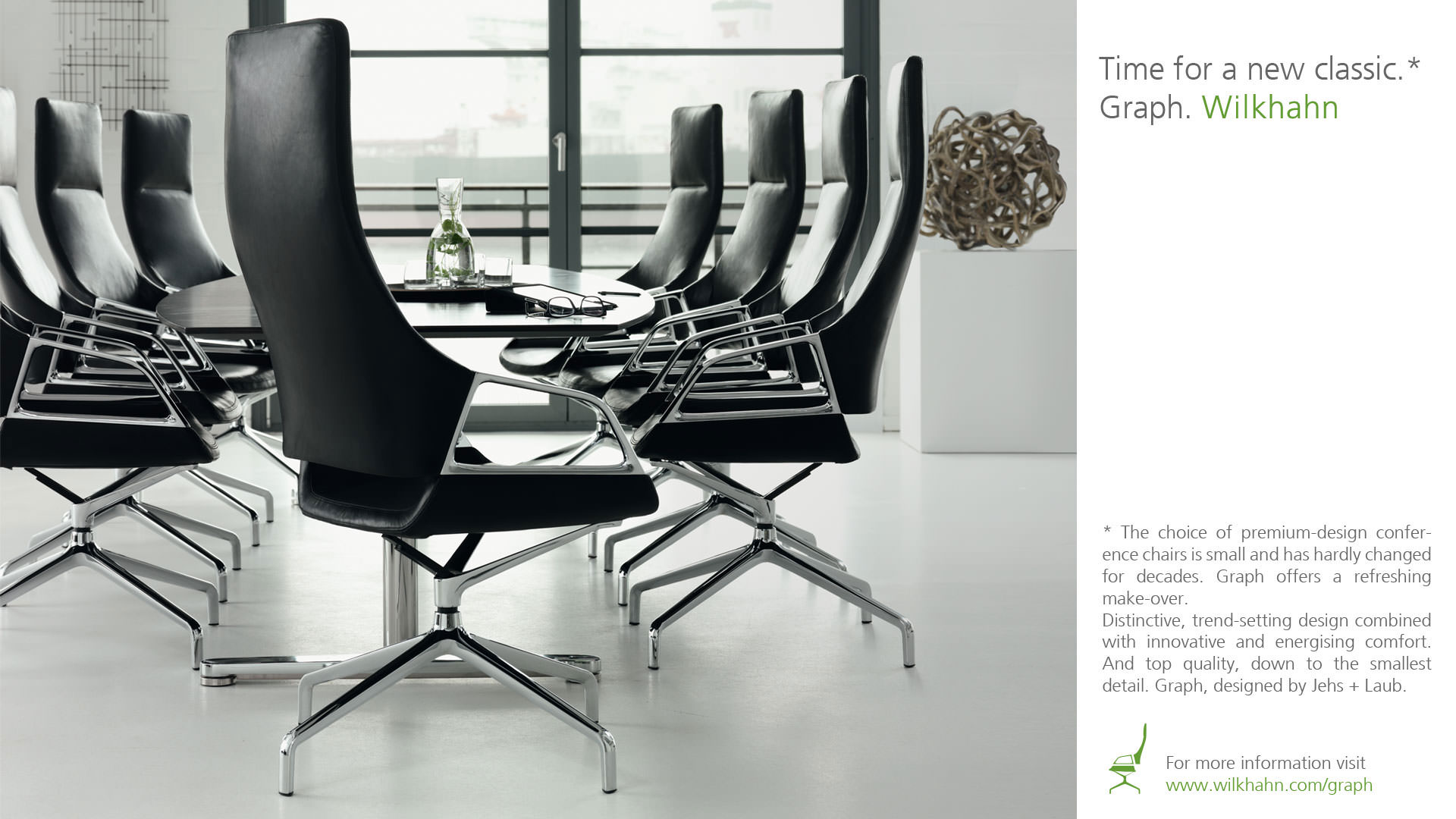-



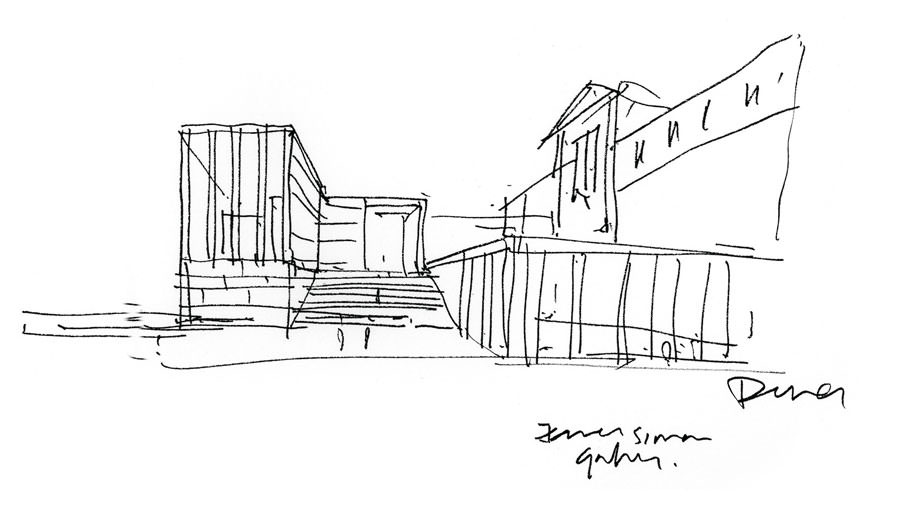

Behind the Façade
Ingrid von Kruse on capturing starchitects on film.
Text by Luise Rellensmann
-
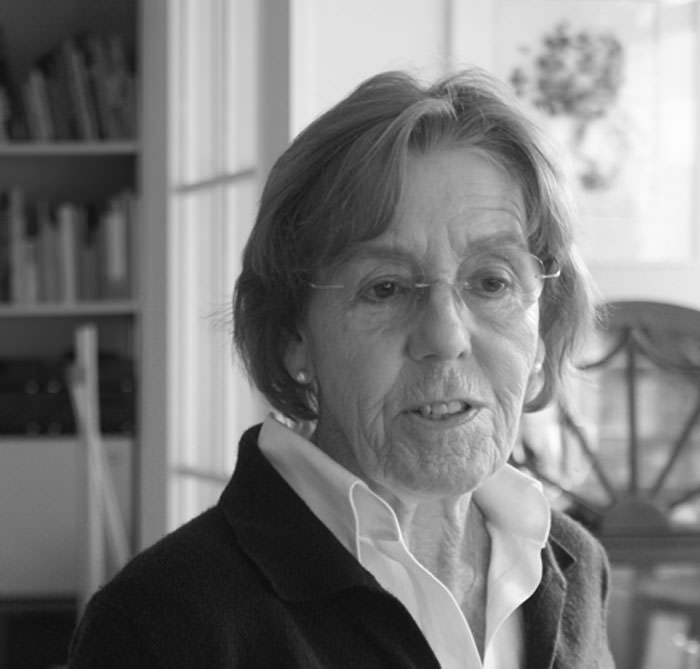
Ingrid von Kruse (Photo: Luise Rellensmann)
Until a few years ago, the Hamburg photographer Ingrid von Kruse had little to do with architects. The 75-year-old woman had spent her life photographing the intellectual and political elites of Europe – her vast collection of unusually touching black-and-white portraits include Mikhail Gorbachev, Astrid Lindgren, Federico Fellini, Marcel Marceau, Leonard Bernstein, Pina Bausch, and Willy Brandt.
However, in her book Eminent Architects, Kruse photographed exclusively architects: Zaha Hadid, Frank Gehry, Tadao Ando, Norman Foster, Álvaro Siza, and Peter Eisenman, assembling 32 of the most prominent in recent times. In this book, her portraits are accompanied by sketches or short, handwritten statements by the architects, sometimes alongside images of architectural models. Out of the combination of faces, handwriting, and projects, an examination of the architects’ artistic thoughts emerges – an abstract idea, an essence, attains a contour.
Luise Rellensmann visited Ingrid von Kruse at home in her Hamburg apartment to find out more.
-
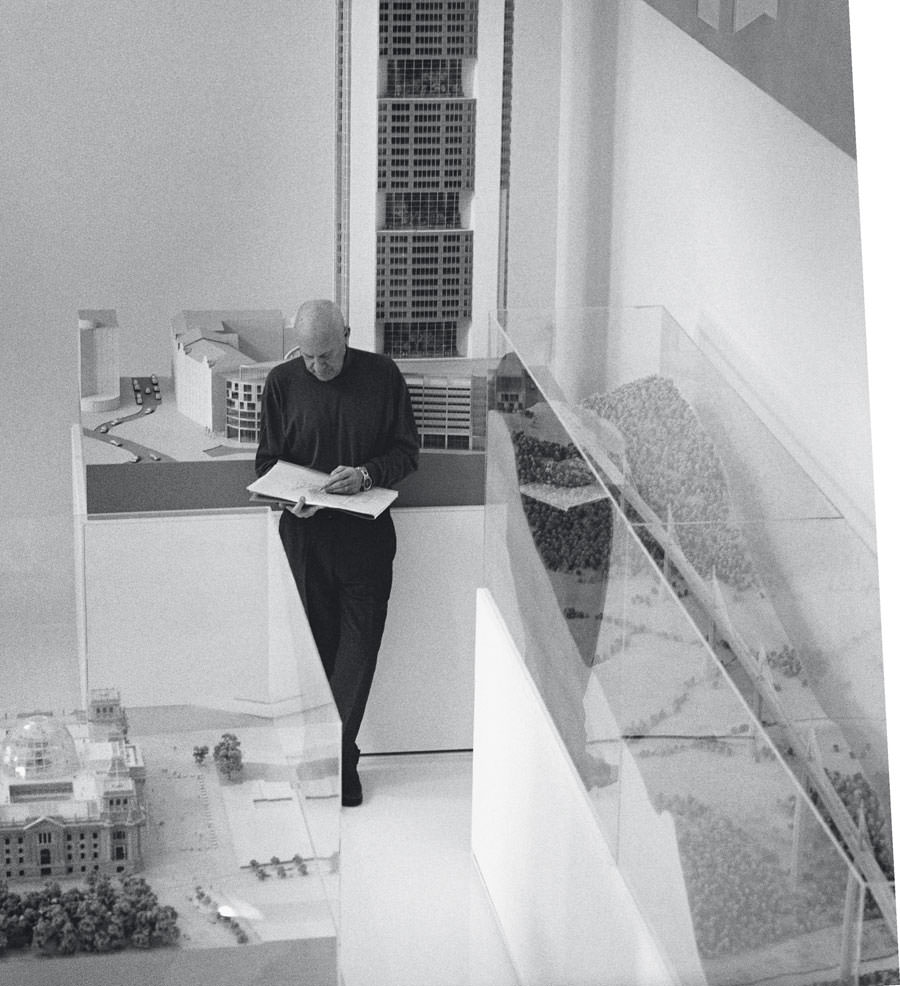
Norman Foster in his office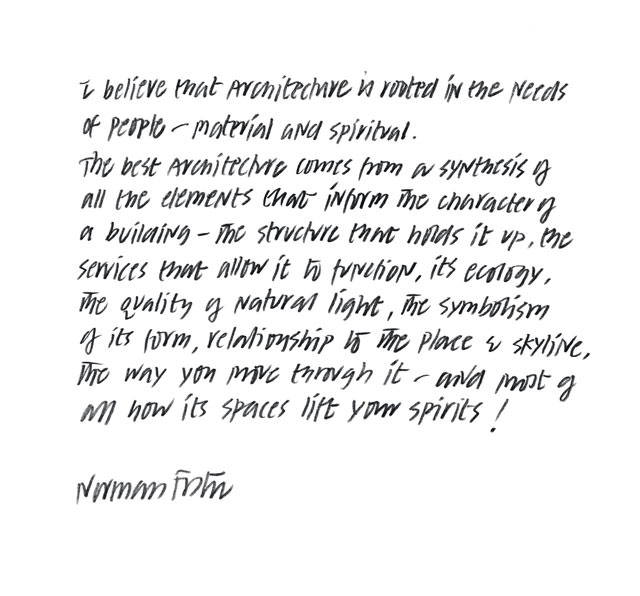
Frau von Kruse, why have you chosen to make portraits of architects?
Subjects cannot be sought. They must come to you. Some time ago I suffered a very difficult loss – my husband was killed in an accident. Friends encouraged me to distract myself with a new subject. On a trip to Cologne I went to the Arp Museum in Rolandseck, built by Richard Meier. That museum inspired me very much; I thought it was marvelous how the light and shadows came through the windows. The next day, I took portraits of Tony Cragg, a well-known English sculptor and the rector of the Kunstakademie in Düsseldorf. He was making a sculpture park in Wuppertal at the time. There was a listed anthroposophic house on the property, built by a student of Rudolf Steiner. Neither of us liked it at all. Cragg said: “Norman Foster said it’s a jewel. You should also photograph him.”
-
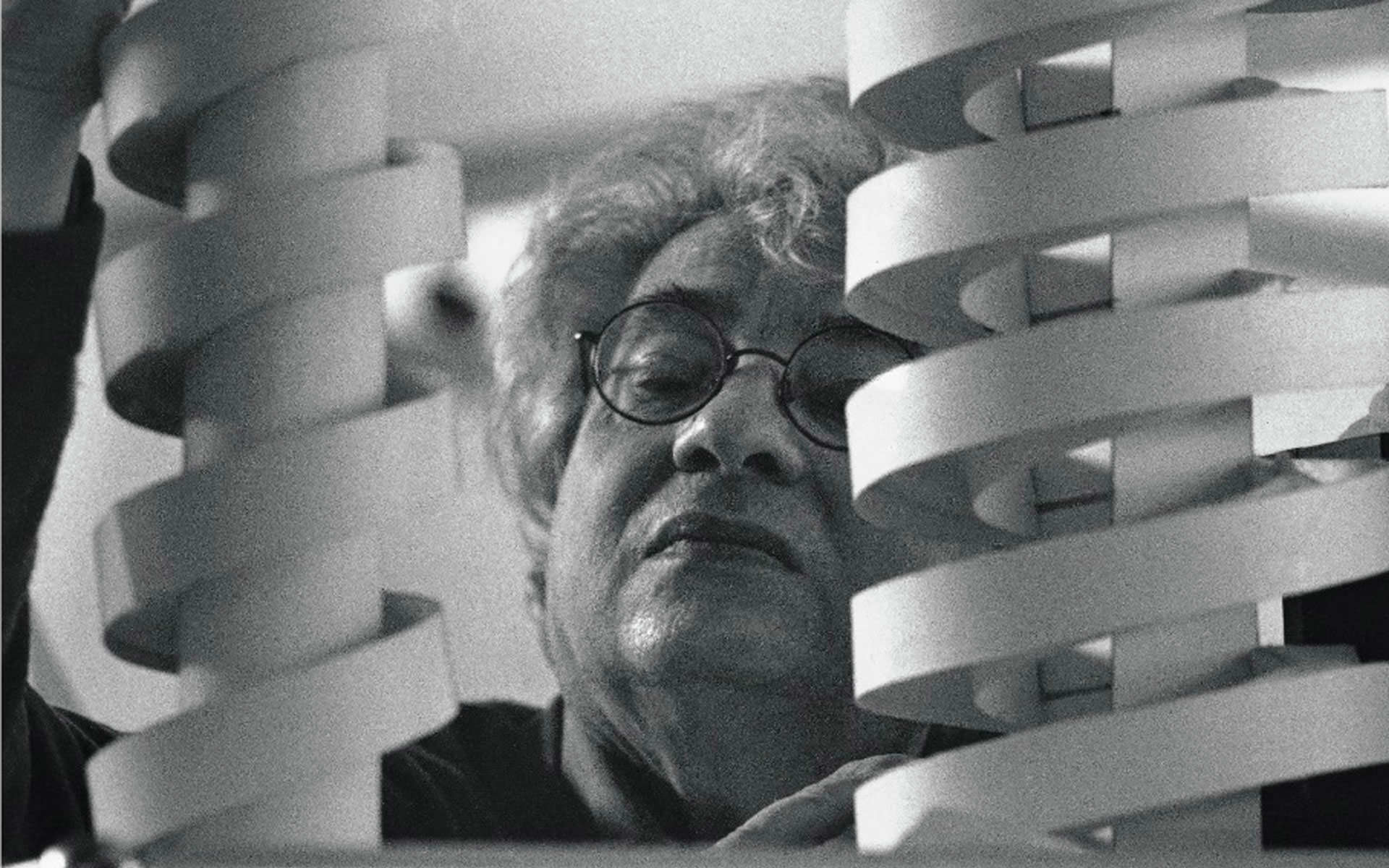
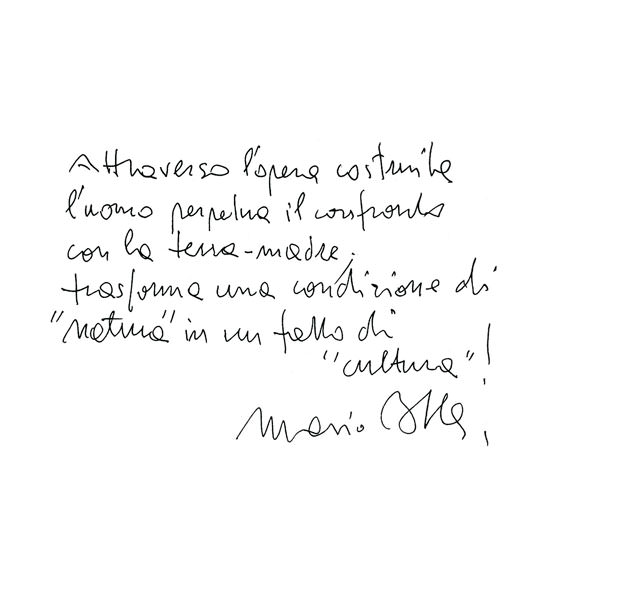
Mario Botta
-
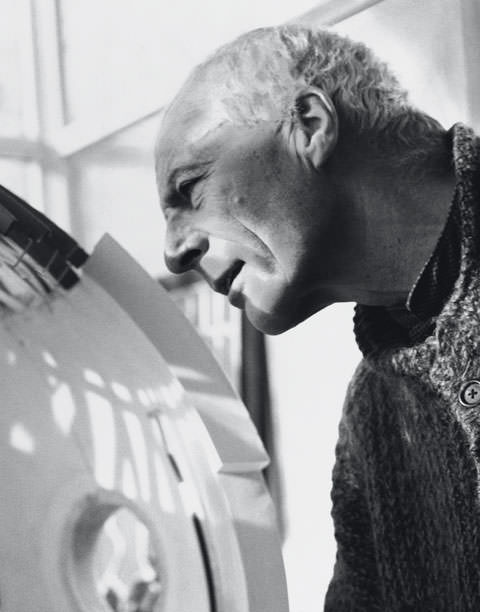
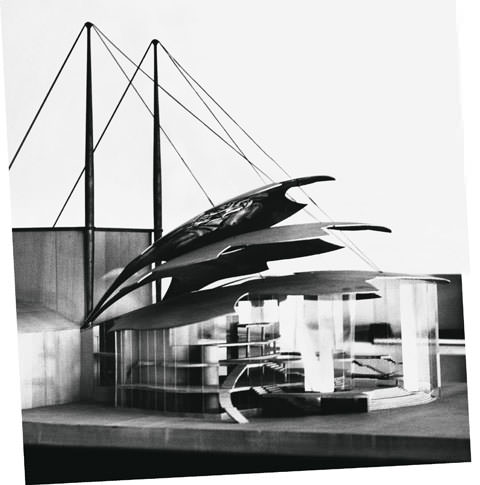
And that’s how the idea was born. I thought, here’s a subject that interests me and would mean a lot of traveling, which is something I enjoy doing very much.
What fascinates you about architects?
Architects are not philosophers; they are doers. They have ideas in their head that they turn into reality using modern technologies. And what I find particularly enthralling is that the result is sometimes very questionable.
What do you mean by that?
It’s crazy what is built sometimes. It seems like as much as possible is made of glass. Those glass palaces sometimes seem like tears. In the wonderfully beautiful Getty Museum and Research Institute in Los Angeles, for instance, the blinds are lowered early in the morning in February. Nevertheless, it’s still so bright that the employees need to put on sunglasses. It makes me wonder how much the inhabitants’ psyches and bodies are taken into account in such designs. Things are built just because, say, Richard Meier wants to realize his idea. Or take Zaha Hadid’s MAXXI museum in Rome. With its concrete stairs and curved walls it seems very brutal – and is not at all suitable for exhibitions. Architects should build museums and not monuments to themselves! But there are also architects who embrace responsibility and build for the people. David Chipperfield is one of them, in my opinion.
How did you make the selections for your portrait book?
I’m not at all at home in the architectural scene.
Gottfried Böhm and the model of his design for the Hans Otto theater in Potsdam.
-
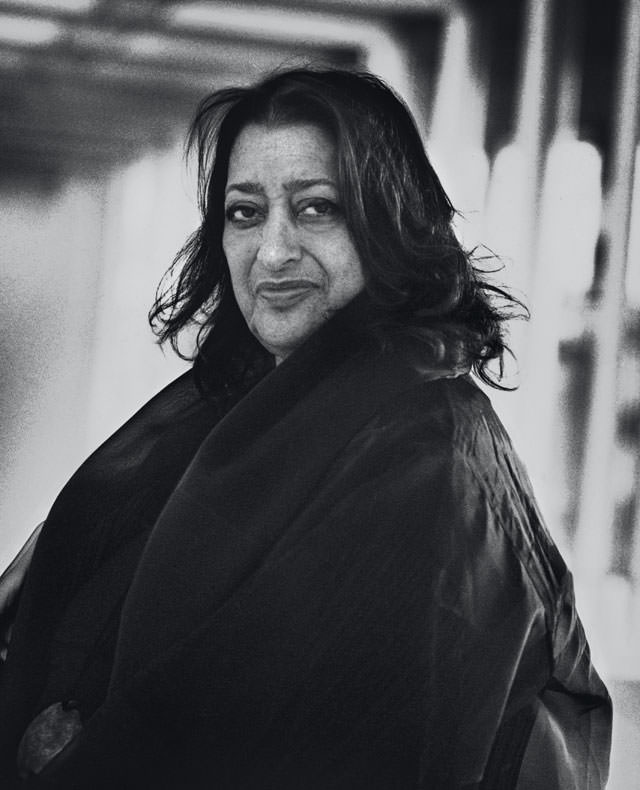
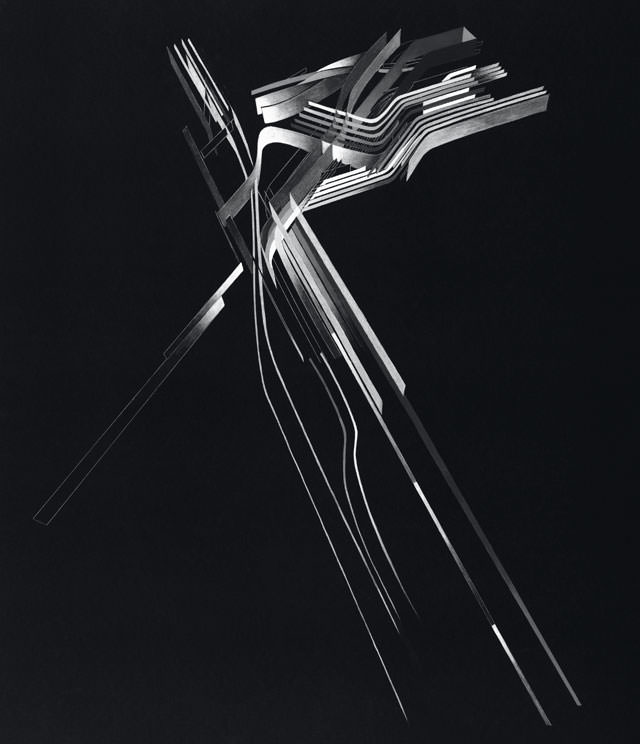
So I thought I should choose the Pritzker Prize winners – that’s manageable. And then there were other well-known architects, like David Chipperfield, Mario Botta, and Santiago Calatrava.
How did you approach the architects?
I sent a handwritten letter to each of the architects. I thought it would stand out and won’t be so easily discarded. The architects were then able to view my website to get an impression of my work, and to see everyone who I’ve already photographed. Viewed in the broader context, the architects are surely not at the topmost level of people I’ve used as subjects. Maybe that’s why they all agreed.
Your book is dominated by men; there are only a few women in it…
That’s right. I find that odd and also distressing. It’s really very hard to find a woman who is all the way at the top of the architectural hierarchy.
Von Kruse about her picture of Zaha Hadid: “It’s an unusually beautiful picture of her. She was very pleased with it. Until then, there were hardly any good pictures of her. That’s also because Zaha Hadid often flirts with her un-shapeliness.”
-

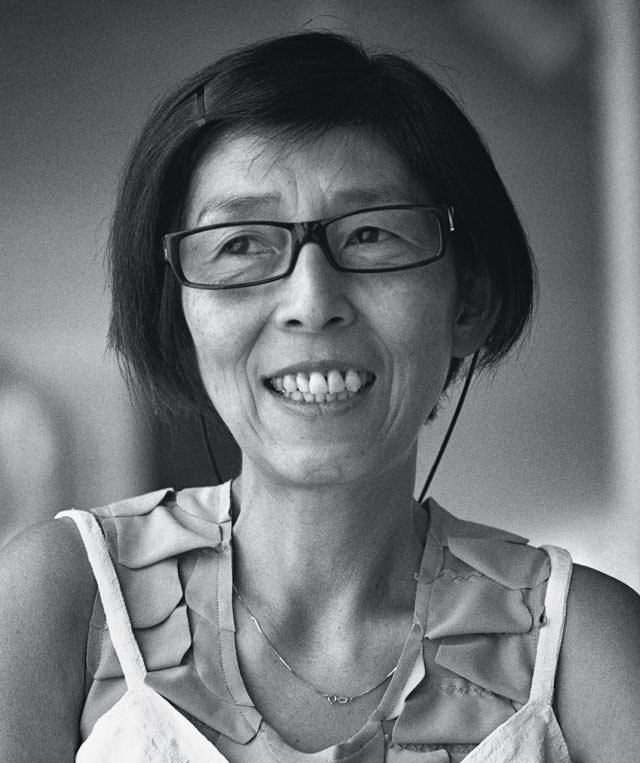
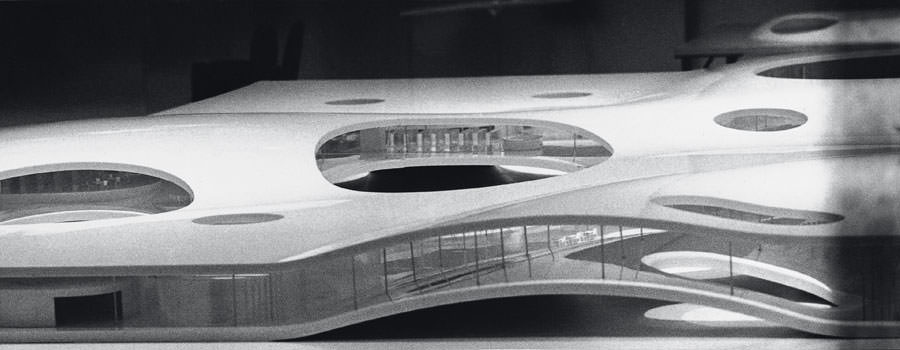
And when you do, they are exceptional people like Phyllis Lambert, who was a student of Mies van der Rohe. Her wealthy father built the Seagram Building in New York, and she later invested his money in architecture and founded the Canadian Centre for Architecture in Montreal.
You have also photographed Zaha Hadid…
It’s an unusually beautiful picture of her. She was very pleased with it. Until then, there were hardly any good pictures of her. That’s also because Zaha Hadid often flirts with her un-shapeliness. In any case, I don’t believe she has any problems with her appearance. She is so well known that she can simply ignore such criteria. One thing is clearly evident in my photos of Hadid, Lambert, and also Kazuyo Sejima: they’re all strong, tough women with great self-assertiveness. That’s undoubtedly needed in their milieu.
Kazuyo Sejima, the model of SANAA’s Learning Center in Lausanne, and Sejimas handwriting.
-
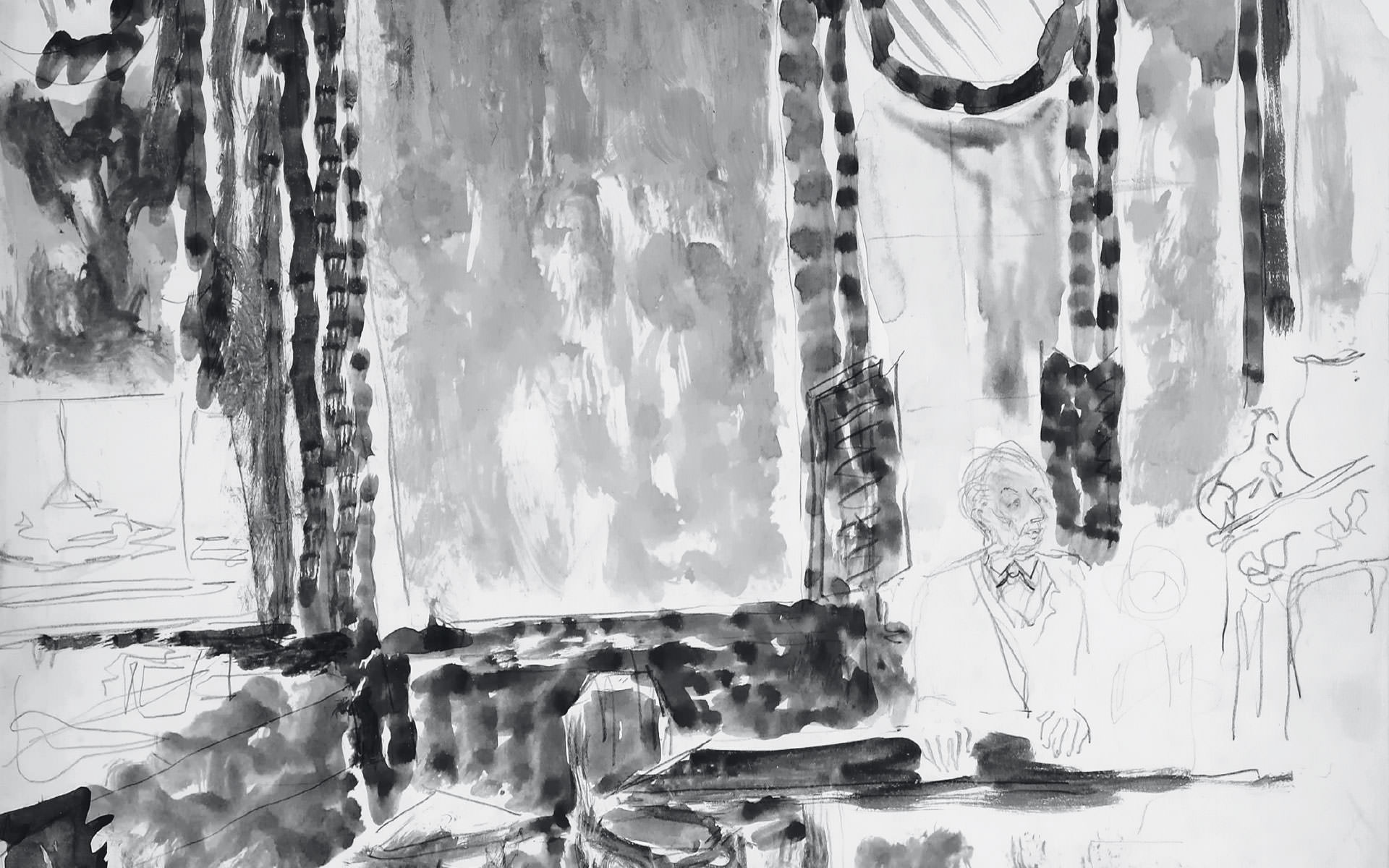
Sketch by Phyllis Lambert of Frank Lloyd Wright in his rooms at the Plaza, 1955.
(Photo: CCA, Montreal, Canada) -
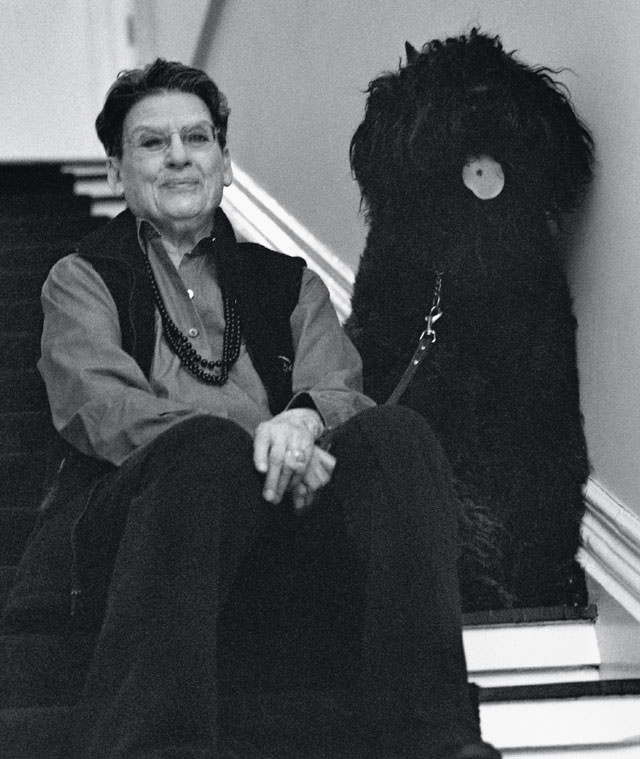
Phyllis Lambert together with her big, black dog, Eros.
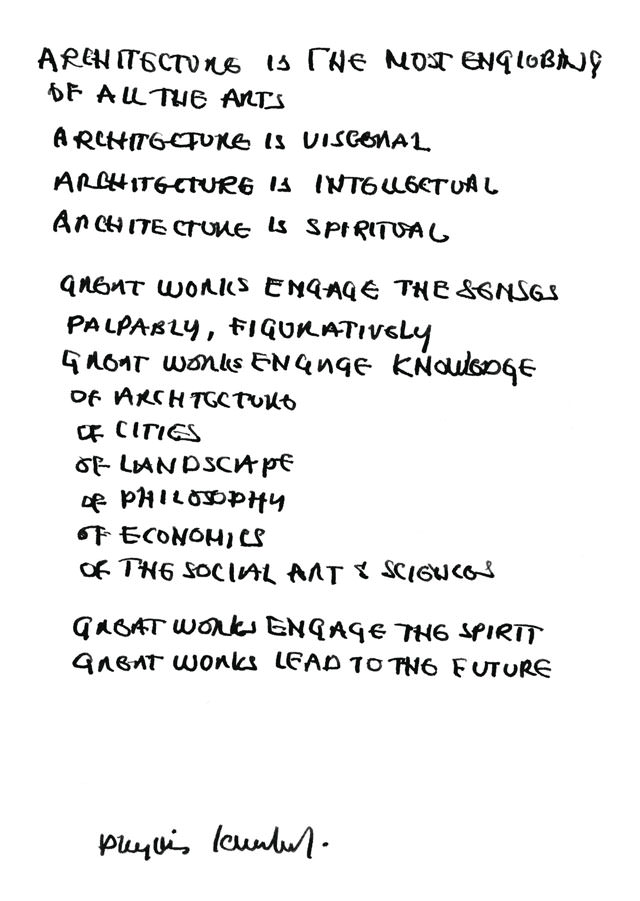
Something that also stands out is that most of the architects you portray are old. Do you think faces are more fascinating when they’re marked by the signs of age?
Yes. Old faces tell better stories.
Did you specify particular locations for the shootings, or did you let the architects decide?
I wanted to photograph all of them in their own environments – in their offices. Of course that wasn’t always possible, so there are exceptions. With Tadao Ando, for example, who was the first one I photographed. At the time he was renovating the Punta della Dogana in Venice for François Pinault’s collection. I met him there on the building site. I met the architects from SANAA in their Rolex Learning Center in Lausanne, shortly before the opening. I also wrote in the book about our encounter in this incredibly well-balanced building, with its glass-enclosed meeting rooms and ramp-like connections instead of stairs.
-

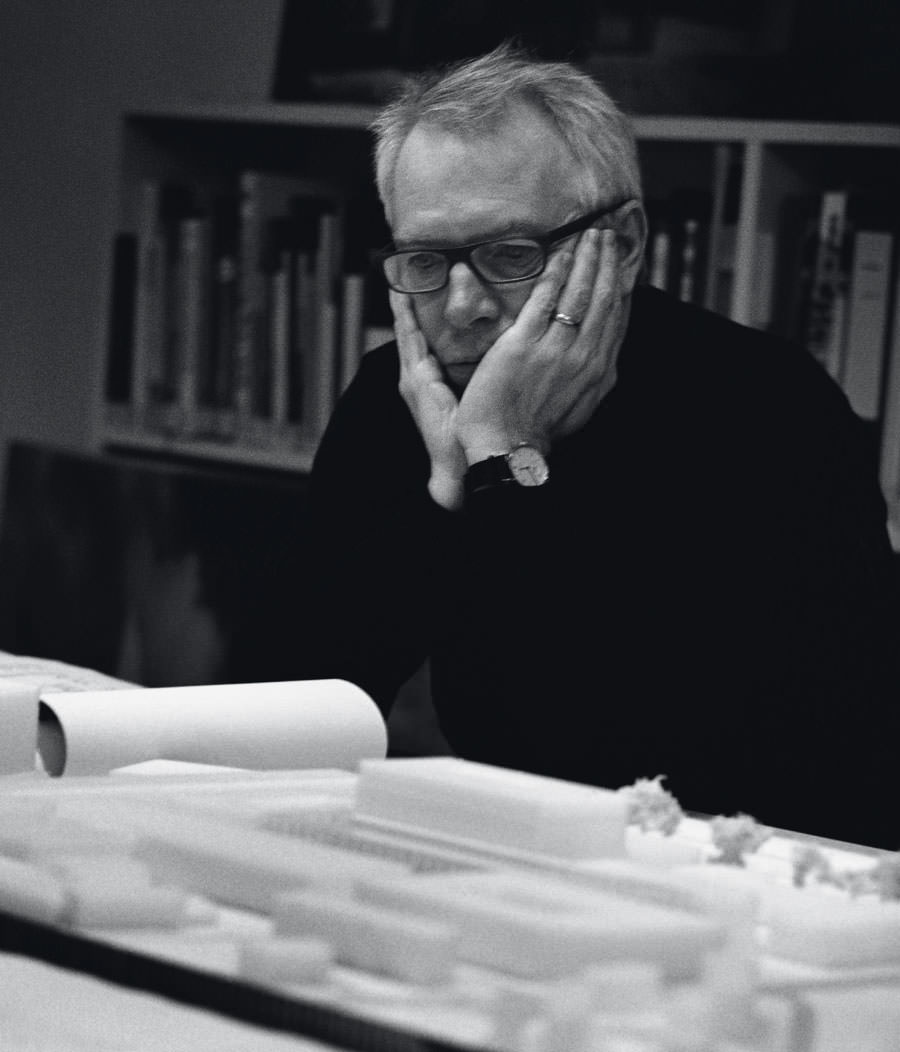
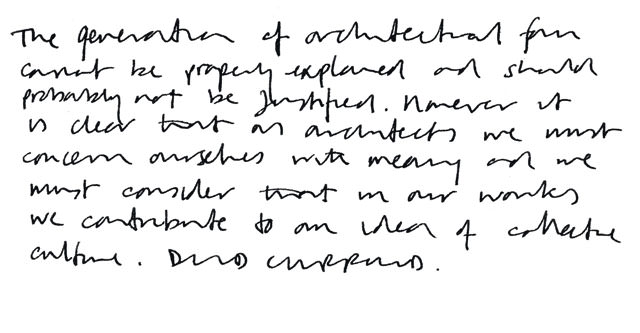
David Chipperfield, his handwriting and a personal sketch of his new, central entrance building of the Museumsinsel in Berlin.
-
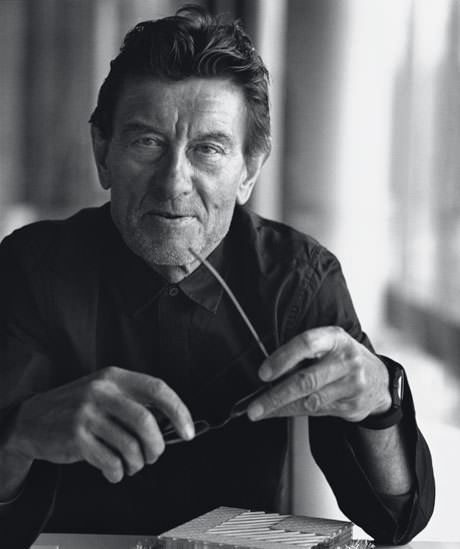
Helmut Jahn
Was that the most unusual location for you?
Mario Botta’s studio tower in Lugano impressed me very much. It’s built of brick and wonderful slate and marble. He has his studio on the two middle floors. The windows are placed all around like portholes, and the offices for individual architects are placed like slices of cake around the gallery in the center. It was also interesting at Peter Zumthor’s office. Everything seemed to be hermetically sealed. As if he wanted to wall himself in and make access for others as difficult as possible. There were dark, steep stairs in his studio; I stumbled a few times. What’s more, I had to take off my shoes and put on slippers.
Who had the most chaotic office?
Norman Foster said to me: “Everyone has his own shell where he can be creative.” And the differences are really great. After Richard Meier’s office, where everything was snow-white, I went to Peter Eisenman’s. There, old cardboard was lying all around and nothing was nicely painted. From there I went on to Rafael Moneo’s office.
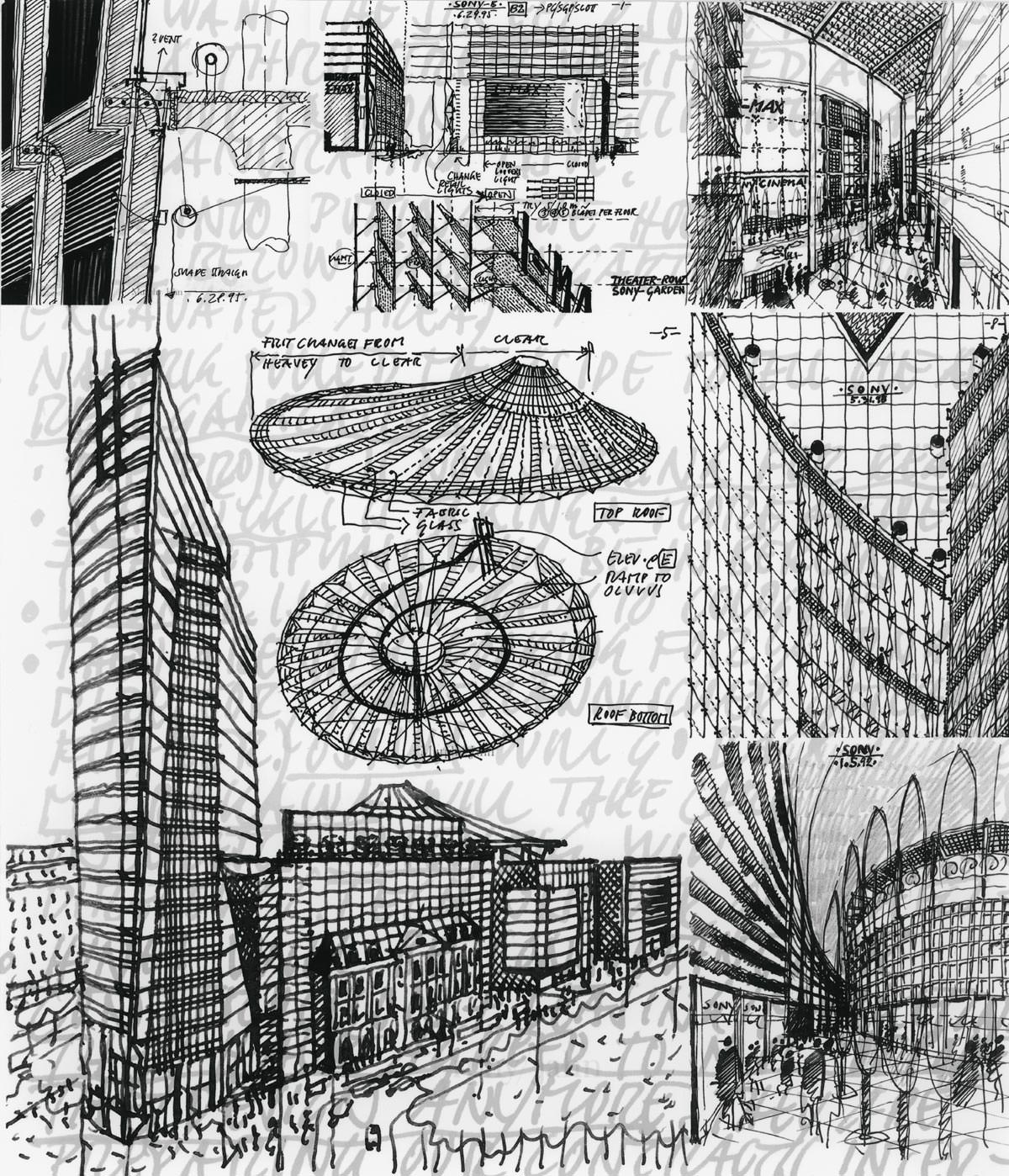
-
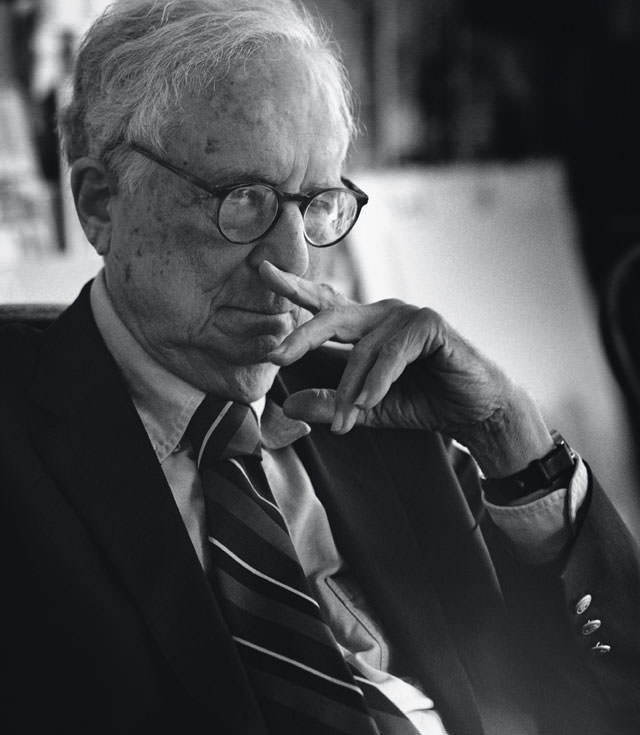
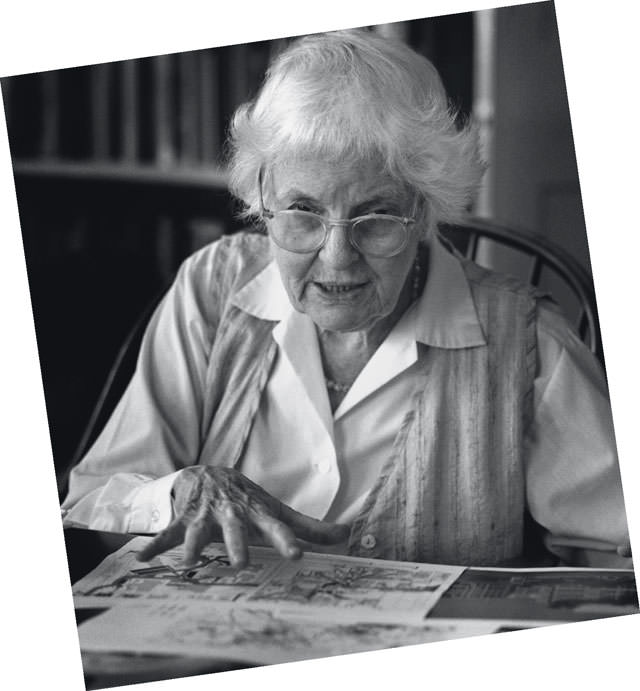
Robert Venturi and Denise Scott-Brown
-

I am a Monument, the almost iconic drawing from Venturi & Scott-Brown’s “Learning from Las Vegas” book.
-
When I arrived there, I thought at first that I was standing in front of the wrong building. I was completely bewildered – bits of paint were peeling off and the gate to the garden hung askew. Nevertheless, Moneo is a fine old gentleman, who worked in an orderly, precise, and very conscientious manner. That’s recognizable in his extension to the Prado. But to photograph his models, I had to go into the attic, where everything was lying around. Seeing the individual architects’ surroundings was a very interesting experience indeed. I found it reassuring to find a junk room!
What was your time frame for completing the project?
It took two and a half years from the first photo to the printed book. During one and a half of those years I merely traveled and took photographs. A terrific experience.
Architects are always in a rush. Did they make sufficient time available for you? Or did everything have to be done quickly?
I generally had enough time. But architects really think they’re the busiest people in the world. I can’t vouch for that. Because when I think of great politicians, for instance – they are faced with entirely different challenges, also with a different responsibility. It really is a peculiar image that the architects have of themselves. And there are only a few who don’t overtly act the part – Richard Meier, for example. Eisenman and I. M. Pei also didn’t continually emphasize how busy they were.
What camera do you use to take your photographs?
I take pictures the old-fashioned way: with an analog Hasselblad. I have no studio. I prefer traveling to my subjects than having them come to me. I always take black-and-white photographs and develop the film myself. I rent a basement where I do all the darkroom work. It’s all very primitive. I like that.
With all your experiences with architectural personalities, were you able to discover a characteristic common to all architects?
Maybe their fashion. All of them wore modern watches, most of which are also visible in the photos. Many love wearing a black sweater.

-
Search
-
FIND PRODUCTS
PRODUCT GROUP
- Building Materials
- Building Panels
- Building technology
- Façade
- Fittings
- Heating, Cooling, Ventilation
- Interior
- Roof
- Sanitary facilities
MANUFACTURER
- 3A Composites
- Alape
- Armstrong
- Caparol
- Eternit
- FSB
- Gira
- Hagemeister
- JUNG
- Kaldewei
- Lamberts
- Leicht
- Solarlux
- Steininger Designers
- Stiebel Eltron
- Velux
- Warema
- Wilkhahn
-
Follow Us
Tumblr
New and existing Tumblr users can connect with uncube and share our visual diary.
»Where there is nothing, everything is possible. Where there is architecture, nothing (else) is possible.«
Rem Koolhaas
Keyboard Shortcuts
- Supermenu
- Skip Articles
- Turn Pages
- Contents
